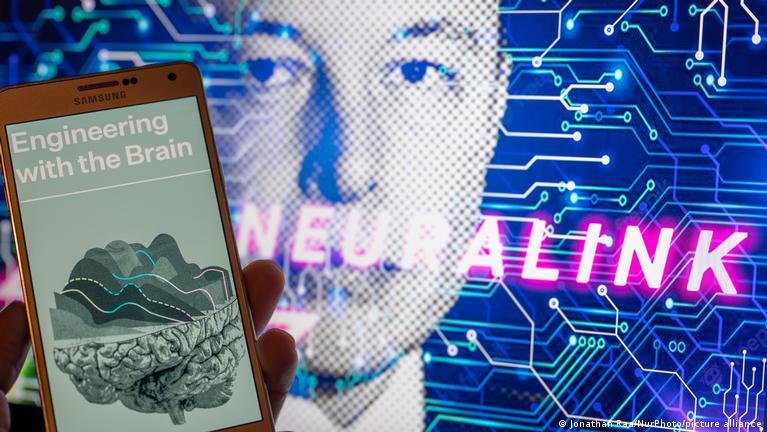The Future of Brain-Computer Interfaces: Sci-Fi or Reality?

In 2020, Elon Musk made a bold statement that "the future is going to be weird" as he talked about the potential uses of brain implants developed by his neurotechnology company Neuralink. Over the past seven years, the company has been developing a computer chip designed to be implanted into the brain, where it monitors the activity of thousands of neurons. The chip, officially considered a "brain-computer interface" (BCI), consists of a tiny probe containing more than 3,000 electrodes attached to flexible threads thinner than a human hair.
Musk's vision for Neuralink is to link the brain with computers to allow information and memories from deep inside the mind to be downloaded, much like in the 1999 science fiction film "The Matrix." Musk also wants to use the technology to treat conditions like blindness and paralysis, as well as achieve human telepathy and provide people with "super vision" to prevail in a war against artificial intelligence.
However, the question remains: Is any of this feasible? The short answer is no.
"We cannot read people's minds. The amount of information that we can decode from the brain is very limited," said Giacomo Valle, a neural engineer at the University of Chicago.
Juan Alvaro Gallego, a BCI researcher at Imperial College London, agrees, saying that it's hard to imagine BCIs reading our minds in this lifetime. "The fundamental problem is that we don't really know where or how thoughts are stored in the brain. We can't read thoughts if we don't understand the neuroscience behind them," he told DW.
However, there are still plenty of clinical uses for BCIs grounded in reality. Musk first showcased the Neuralink technology in 2019, introducing a pig with a Neuralink chip implanted in its brain and a video of a monkey controlling a pong paddle with its mind. But the potential for BCIs goes far beyond animals playing games.
Gallego said the technology was first developed to help people paralyzed with spinal injuries or conditions like Locked-in syndrome — when a patient is fully conscious but can't move any part of the body except the eyes — to communicate.
"If you [could] translate their internal communication into words on a computer, it would be life-changing," said Gallego.
In these sorts of cases, BCIs are designed to record electrical signals from neurons in the motor cortex, then send the signals to a computer where they are displayed as text.
The motor cortex isn't typically thought to be involved in thinking. Instead, it's where instructions to move are sent out to the body, like the tongue and jaw muscle movements for speech.
What the electrodes are really recording is a motor plan — more precisely, the end result of all the processing in different parts of the brain (sensory, linguistic, cognitive) required to move or speak.
"So BCIs aren't really recording your thoughts, but rather the brain's plan to move a finger here, a leg there, or to open your mouth to make an 'Aah' sound," explained Gallero. "Scientists also showed they can read the motor cortex's intent to draw a letter. Using complex modelling [with the connected computer], this allowed paralyzed participants to type 10 words per minute, which was a breakthrough."
Another breakthrough occurred in 2016, when then-US President Barack Obama shook Nathan Copeland's robotic hand. Copeland, who was paralyzed after a car accident, felt Obama's handshake as if they were touching skin to skin.
"This demonstrated a different capability of BCIs. Rather than using electrodes to record from the brain and interpret intended movements, they instead stimulated the brain with tiny currents to produce sensation," said Gallego.
In addition to providing increased efficiency and safety, AI is also proving to be a valuable tool in fields such as healthcare and education.
In healthcare, AI algorithms can analyze large amounts of medical data and help doctors and researchers make more accurate diagnoses and develop more effective treatments. For example, AI can be used to analyze medical images like X-rays and MRIs to help doctors detect diseases like cancer earlier and more accurately. AI can also be used to monitor patient data in real-time, alerting healthcare providers to potential health issues before they become serious.
In education, AI can help personalize learning experiences for students, providing them with tailored content and assessments based on their individual learning needs and abilities. AI-powered education platforms can also analyze student data to provide teachers with insights into their students' progress and help them identify areas where students may need additional support.
As AI continues to develop and become more integrated into our daily lives, it is important to ensure that it is being used ethically and responsibly. This means addressing issues such as bias in AI algorithms and ensuring that the benefits of AI are shared fairly across all members of society.
In conclusion, AI is a rapidly growing field with the potential to transform many aspects of our lives. While there are challenges and ethical considerations that must be addressed, the benefits of AI are clear and its impact is likely to continue to grow in the years to come.